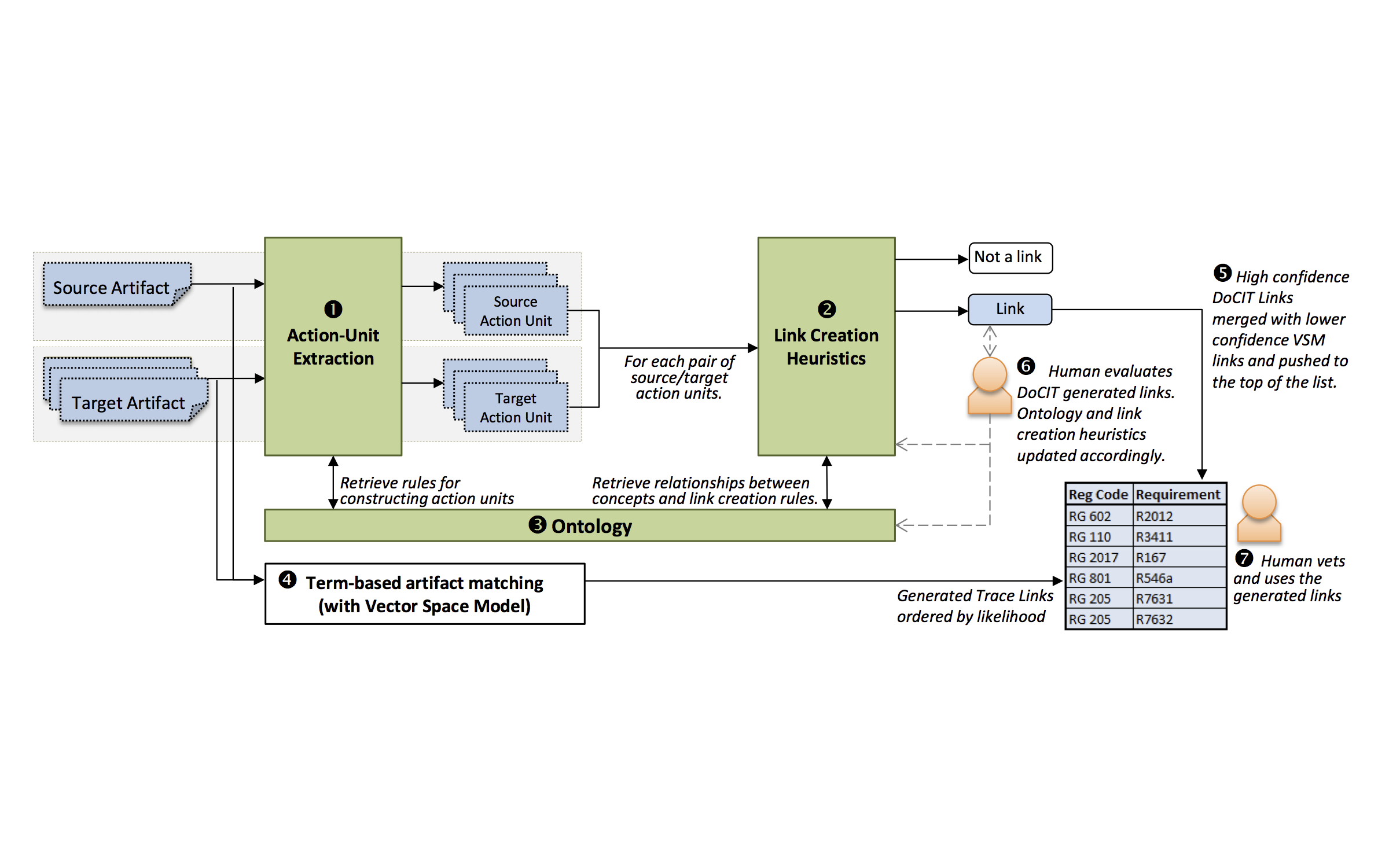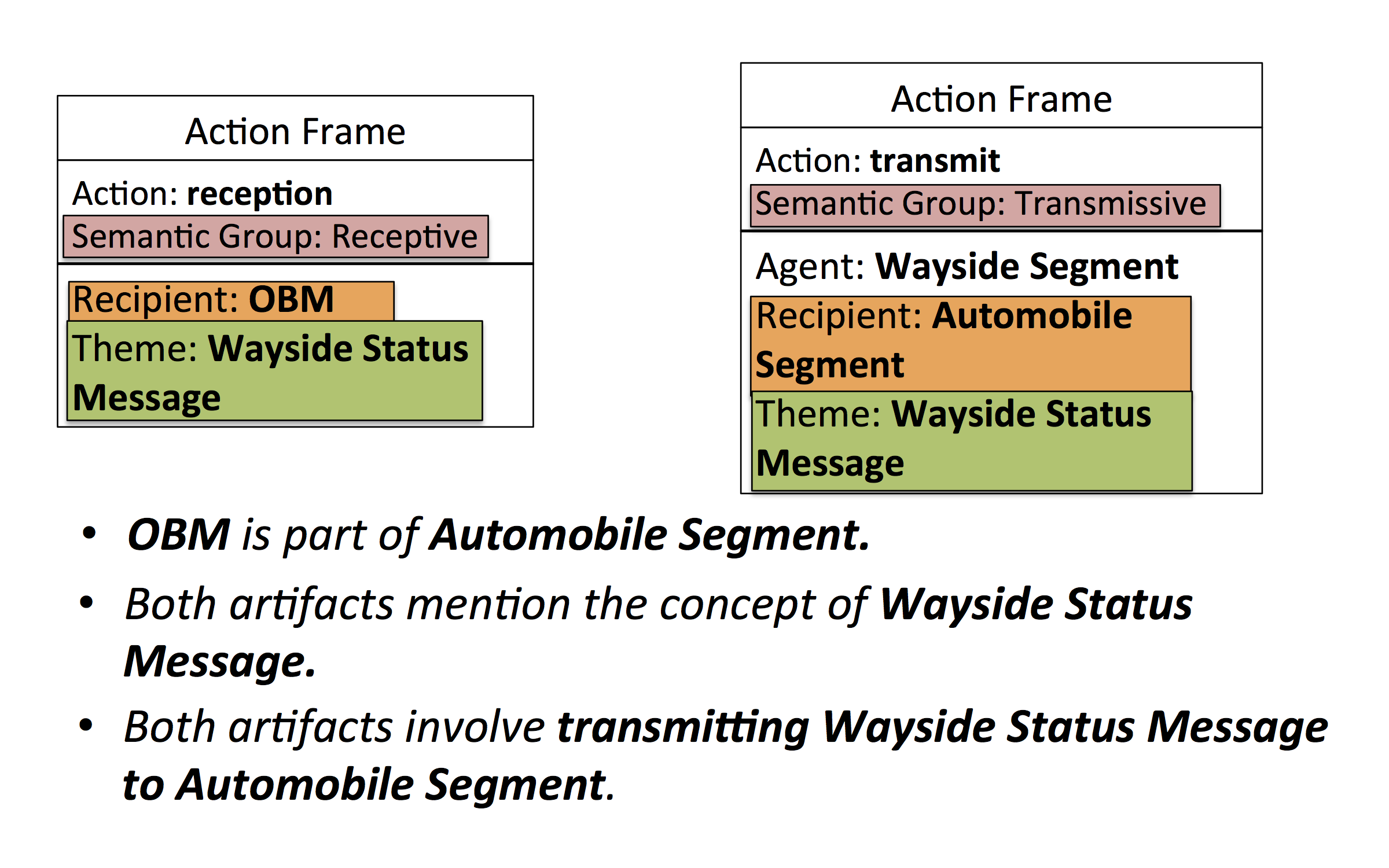Intelligent Domain-Specific Traceability Solution (2013-2015)
Software trace links exist between various associated artifacts such as requirement specifications, system design descriptions, source code, test cases, etc. For example, one design description is linked to a requirement because it describes how the system is designed to fulfill that requirement. Such trace links can support a variety of software engineering tasks including compliance verification, impact analysis, and test-case regression analysis. Creating and maintaining software trace links are therefore essential in the development of any non-trivial system.
The majority of current automated or semi-automated trace link solutions rely primarily on comparing the common terms of the artifacts (e.g. VSM), or terms that often appear in the same context (e.g. LSI). Unfortunately, they often ignore the semantic of the artifacts and the related domain knowledge during the comparison. However, this information actually play the most significant role when human experts are scrutinizing artifacts for trace links. In order to overcome this problem, we proposed a Domain-Contextualized Intelligent Traceability (DoCIT) solution. In DoCIT, we first employed Nature Language Processing techniques to transform the original software artifact to a format of “Action Frame” that aim to capture the most important semantic information in the artifact. The comparison is then performed between two action frames, i.e., trace link is established if action frames contain content that matches directly or is related by domain ontology. The concrete matching strategies are defined by a set of trace heuristics. We integrated DoCIT with VSM to return user a ranked list of candidate trace links. We have demonstrated that such approach significantly improve both precision and recall for dataset from the transportation communication and control domain.
DoCIT is also able to explain its trace link evaluation process as trace link rationales to the user. The rationales are automatically generated in the form of natural language text based on predefined rationale generation patterns. The rationales are designed to help project stakeholders better understand and assess the trace links.
Videos
-
Sneak Peek Video @RE'13
Related Publications (email me if you would like a copy)
- Guo, J., Monaikul, N., and Cleland-Huang, J. (2015). Trace Links Explained: An Automated Approach for Generating Rationales. In Proceedings of The 23st IEEE International Requirements Engineering Conference (pp. 202–207). IEEE.
- Guo, J., Monaikul, N., Plepel, C., and Cleland-Huang, J. (2014). Towards an intelligent domain-specific traceability solution. In Proceedings of The 29th ACM/IEEE international conference on Automated software engineering - ASE ’14 (pp. 755–766). New York, New York, USA: ACM Press.
- Guo, J., Cleland-Huang, J., and Berenbach, B. (2013). Foundations for an expert system in domain-specific traceability. In The 21st IEEE International Requirements Engineering Conference (pp. 42–51). IEEE.


